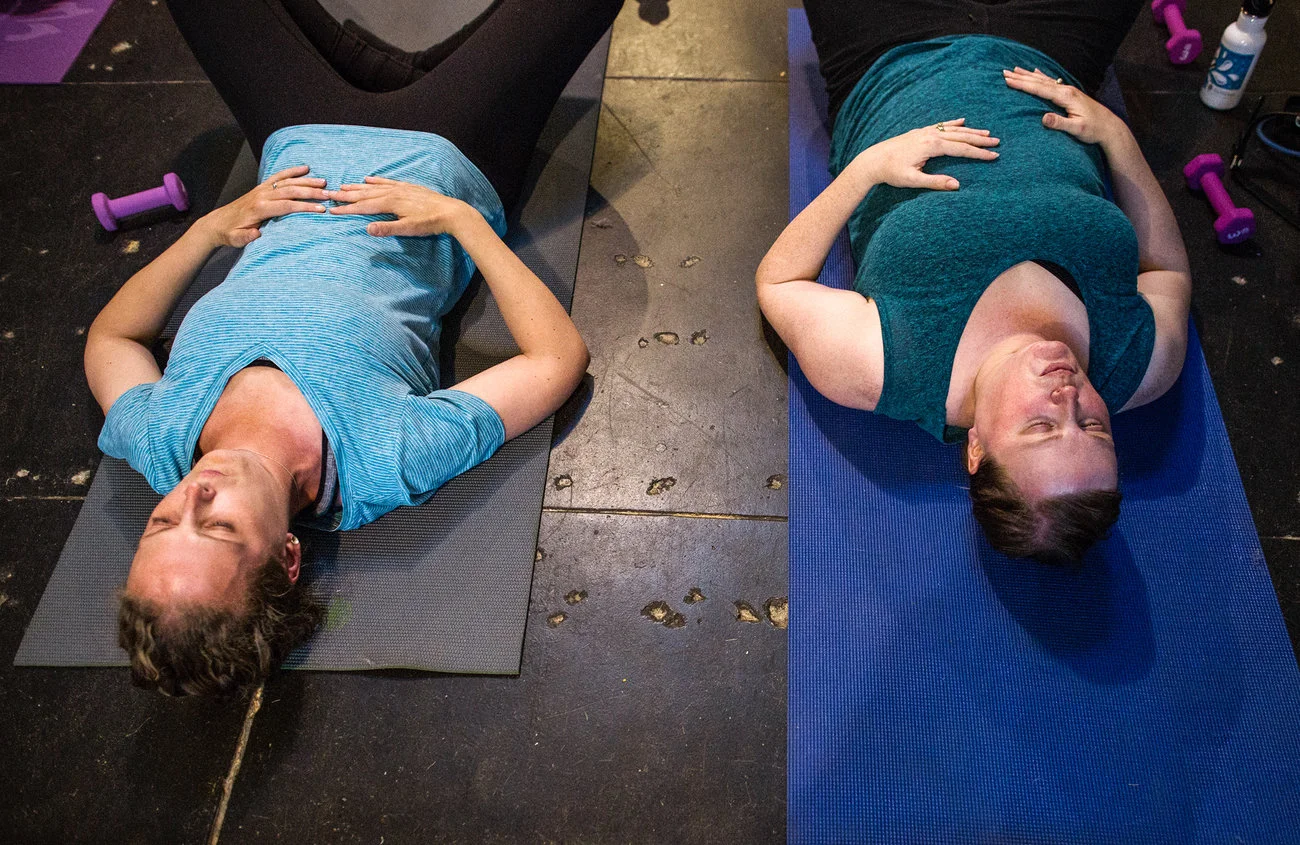Hello and welcome to the first in a series of posts designed to assist dancers in maximizing performance while achieving and maintaining wellness. This first installment is about preventing injury. Due to the high impact of an injury to a dancer’s life, a holistic approach to a preventative program is important.
5 Ways to Know It’s Time to See Your PT After an Injury
We all experience aches and pains throughout our lifetimes. Often pain begins as a result of an injury or clear event. Occasionally it is difficult to pinpoint the cause of pain. Regardless of the scenario, it is common to try to ignore your pain and carry on with your life as usual. So, how do you know when you should take the next step and seek help from your physical therapist?
Healthy Habits Start In Youth - Article Review
As a physical therapist, what I take away from the NPR article by Richard Harris, 6,000-Year-Old Knee Joints Suggest Osteoarthritis Isn't Just Wear And Tear, is the importance of life-long physical activity. Healthy habits start in our youth and sets us up for healthier aging.
7 Yoga Poses for After Your Run
Running can be such a great release from daily stress not to mention a fantastic form of exercise. Running, however, can also cause tight muscles and injuries. Here are 7 poses for you to work your way through post race or simply after your morning jog to keep your body in tip top shape for future runs and races.
Getting ready to run: the dynamic warm up
A recent review by the British Journal of Sports Medicine estimates that injury rates to the lower body in endurance runners can be as high as 79%. A frequent component of treatment in returning to running involves instruction in a dynamic warm up.
What Exactly is the Rotator Cuff?
Resolve to be Pain-Free
Stay Active in the Colder Months
Injury Transition: Returning to activity
Is How You're Sitting Giving You Headaches?
Headaches are a pain, literally and figuratively. They sneak up on you, slowly making you crankier and crankier, ruining your day. Headaches are attributed to many different causes; often we say “I’m stressed” or “I need to drink more water” or even “I didn’t get enough sleep.” But did you know many headaches can be tied to our posture and muscle tightness in our neck?
3 Areas Where Acupuncture Can Improve Your Running
4 Tips to Running Pain Free
We Were Built to Run
Neck Pain: Out with the Old, In with the New
Modern technology has created a lot of flexibility in workspaces. The traditional 9-5 is morphing, with more people working remotely from wherever they are. That might mean creating space at home or having a moveable setup for use in a coffee shop or conference room. Being fluid with workspaces helps people escape the problem of being stuck in a cubicle all day, but it has downsides too.
It means your “office” may be anything from a couch to an Uber. Plus, the line between work and home is becoming blurry. When we used to be able to power down at the end of the day, we now have 24-hour access to emails and texts, and often use phones and tablets for our entertainment well into the night.
Which leads to my next question: How is your neck feeling?
If you answer is “not great,” you aren’t alone. An increase in driving, computer work, and phone use is upping the daily physical stress for a lot of us. As an acupuncturist, I see patients with a variety of issues, but one part of the body that continually frustrates people is their tight neck. Our physical therapists see this a lot too. We even joke that “text neck” is becoming an epidemic.
Symptoms mentioned include tension and discomfort, pops and cracks in the spine, head-forward posture, knots, and muscle spasms. The neck is a common storage place for mental and emotional strain: Some of us literally wear our stress with our shoulders creeping closer to our ears as energy demands mount.
So, where do we go from here?
Step one is to be mindful about how we hold ourselves. Step two is integrating positive habits to minimize the damage.
In terms of acupuncture, any kind of pain is considered stagnation, or blockage, in the free flow of blood and energy through the body. Solving pain conditions requires unblocking “stuck” regions of the body and keeping it unblocked. To do that, we insert small needles into the affected area, unblocking the channels and promoting relaxation of muscles, improved blood flow, and reduction of inflammation, all easing the pain.
Being proactive is critical, too. Try integrating some of the following healthy habits:
- Retrain your muscles to let go at the end of the day: That could be with a short stretch routine or use of a warm herbal wrap. The warmth will encourage blood flow and help relax your muscles. It also retrains your muscles to let go rather than stay tight.
- Hang upside down: If you aren’t able to be completely upside down, at least get your head below your heart. Try a forward bend to release tension and allow your head and shoulders to fully relax and hang heavily.
- Pay attention to your ergonomic set-up: Establish a primary typing zone with a set-up that reduces strain on your neck and shoulders.
- Change positions often: Get up to use the restroom, roll your shoulders, take a phone call while walking, stretch your arms above your head. Do anything you can to get positional variety into your day.
- Come in for physical therapy: Our PT's can prescribe exercises specific to your neck’s needs.
- Try yoga: Flow your way to wellness in one of our classes to lengthen and strengthen your muscles.
Transition Your Body into Spring
Put the Spring Back in your Step
Do not let cabin fever get the best of you. If you do not ski, snow shoe or skate, the snowy month of March in Maine is an important time to think about indoor exercise and conditioning. There are ways to keep in shape at home without a great deal of equipment or exercise expertise. If you are not already doing so, put the spring back in your step with the following exercises:
Warm up cardio: Walk or jog up and down stairs at home or work.
Mat/floor exercise:
- Heel Touches: Lying on your back, pull in your lower abdominal muscles as if you are zipping up a tight pair of jeans. Hold this position. Then, lift both legs so your hips and knees are flexed to 90 degrees. Slowly touch one heel down to the floor and bring it back up. Repeat with the other leg. Alternate, bringing heels down for 10-30 reps, 1-3 sets, depending on your tolerance. You should feel your abdominals working!

- Spinal Balance: On your hands and knees, slowly lift opposite arm and leg, extending with straight knee and elbow. Be sure to keep lower abdominals pulled in and do not arch your back. 10-20 reps, 1-2 sets, as tolerated.
Leg strengtheners:
- Walking Lunge: Walk forward in a moderate lunge. Be sure that your knee does not collapse in or get ahead of your ankle. 20-40 walking lunge steps, 1-2 sets
- Wall Squats: Sitting against a wall as if you are sitting in a chair, bend knees to almost 90 degrees. Hold for 60 seconds or longer. 5 repetitions.
- Single Leg Calf Raise: Standing on 1 leg, rise up onto your toes. 20-40 reps, 1-2 sets
Arm strength:
- In a plank position, walk hands forward and back. If this is too difficult, shift your weight slowly from one hand to the other instead of moving forward and back. 10-15 “steps”, 1-2 sets
Before starting, please consider which exercises are most appropriate for you and do not perform any exercise that causes pain.
Gardening and Food Preparation
How to Avoid Aches and Pains
First, while snow shoveling conjures images of an aching back, for many so does gardening. Here are some tips to avoid the aching back, neck and shoulders:
- While weeding, planting and harvesting, instead of bending forward, get close to your plants by kneeling, standing in a lunge position or 1/2 lunge position and hinge forward at your hips or bend forward at the hips and squat down.
- Pull in those lover abs! Imagine that you are zipping up a tight pair of jeans and keep you abs engaged as you work.
- Take breaks with frequent changes in position.
- Balance the forward position that gardening requires by standing up tall, gently arching back, reaching your arms up overhead and looking towards the sky-all while taking a deep breath of course!
Secondly, food preparation can cause some postural and repetitive strain. Here are a few tips for the kitchen:
- To avoid low back strain while standing at the kitchen sink, open the cabinet under the sink and place one foot inside. Get in close to the sink and hinge forward at your hips instead of slouching forward at the low back.
- You can alternate feet under the sink.
- Standing at the kitchen counter while cutting up the fresh fruits and veggies is a good time to work on postural awareness. Tuck in your chin, gently lift you breast bone, slightly pull shoulder blades back, pull in the lower abs and have a bend in the knees.
- Perhaps not with the sharp knives, but with stirring and mixing try using your non-dominant hand. This reduces repetitive strain to your dominant side while also building neural pathways to your brain, strengthening movement patterns related to your non-dominant side.
Eat well!
Nancy
Attention All Weekend Warriors !!
Tips to Prevent Injury
Many of us have lifestyles that do not easily support physical exercise. Yet we also find ourselves loving exercise, sports and fitness activities on the weekends. Especially during this time of year when outdoor exercise
opportunities are limitless! As a result, it is easy to end up with an injury and side-lined from the activities that help us stay fit and reduce stress.
Here are some thoughts on injury prevention:
1. Stretch. NOT BEFORE your event, but AFTER a warm up to promote soft tissue extensibility and reduce muscle and tendon injuries.
2. Training. Start training and exercise at 50-75% of what you think you can do. Slowly build up to that 100% to stay injury-free throughout the season.
3. Ice. At the first signs of pain, wear and tear, ice the affected
area.
4. Training. Yes, again! Try cross training to avoid repetitive strain injuries. Variety will promote better overall fitness while also helping you to avoid burn-out.
Finally, don't let injuries linger. If it is not consistently getting
better over the course of a week, get treatment. You will recover more quickly to get back to exercise.
Have a great summer !!
- Nancy Charlesbois PT, MT


















